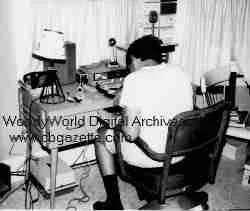It doesn't take much, a mild cold and heavy allergies (Damn you Ragweed) to make life miserable enough to forget about the first Sunday of the month "Funday".
So please excuse my tardiness my friends, I'm pretending it's 3 days ago and I'm at the top of my game... for a little humor!
In between doctor visits and coordination meetings with them, I can positively say: "Yep I have a few surgeries coming up in the near future" but nothing too serious.
Because of this, I've been testing various Dual or Tri-band handheld radios, and hope to complete everything before going under the knife! While my "KING" of H.T.s remains my Yaesu VX-6R, there are several that I can appreciate as well, and keeping them around the shack. Meanwhile, the rest go back.
I also bought the 39ft. Alpha Antenna telescoping whip antenna and plan on fooling around with it - Pretty darn soon...
LET THE HUMOR BEGIN!!
Well, that's it for September's "FUNDAY", a little late but I hope y'all had a good one!
73,





























































